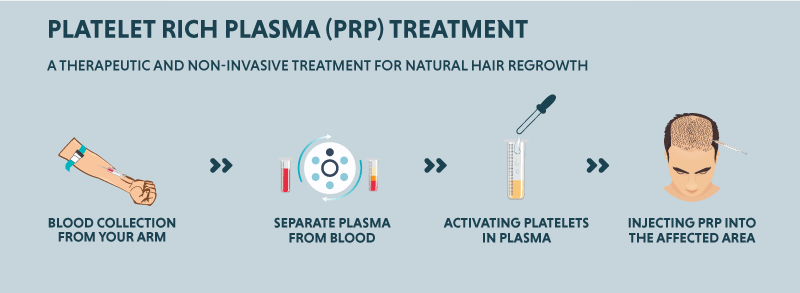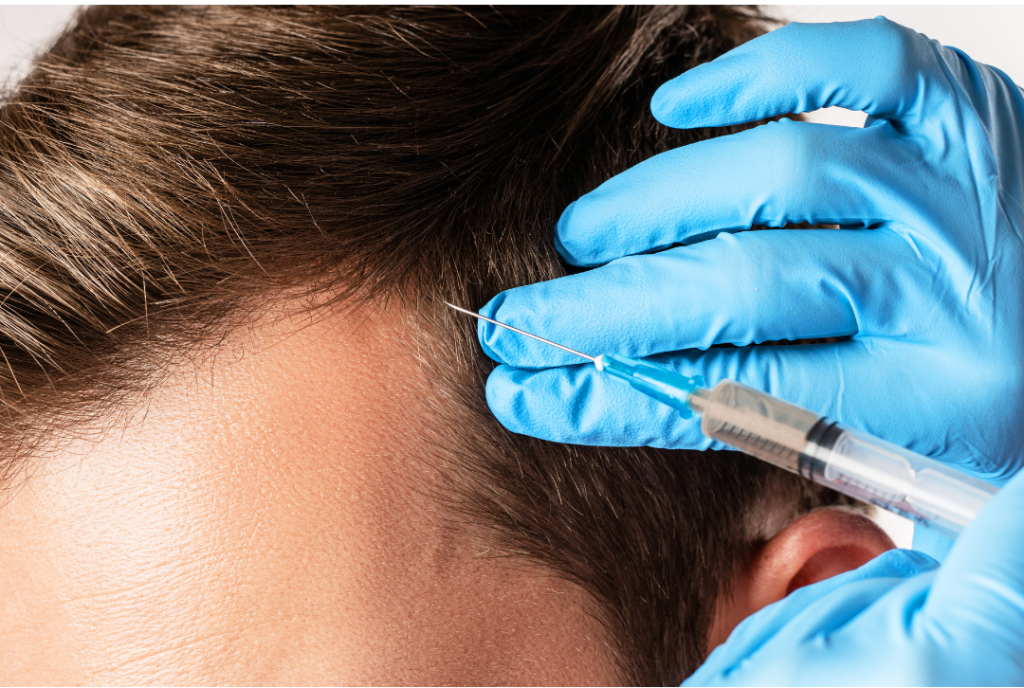PRP Treatment
- Treatments
- PRP Treatment
PRP Hair Treatment Procedure
The PRP hair treatment is a four-step process as explained below –

- Collection Of Blood Sample:
As the first step of the PRP hair loss treatment process, your doctor will take a 20 ml blood sample. - Separation Of Platelets:
Dermatologists use the centrifuge technique for the separation of platelets from the blood. The double spin method ensures the optimal concentration of platelets that are rich in growth factors. - Extraction and Activation Of PRP From The Blood:
Doctors extract Platelet Rich Plasma (PRP) from the remaining layers of Platelet Poor Plasma (PPP), and red blood cells in the tube. Before injecting the PRP into a patient’s scalp, trichologists activate the growth factors in the plasma using an activating agent. - Insertion Of PRP Into Affected Area With Injections:
In the last step, dermatologists inject the PRP extracted from the blood safely into the affected area on the scalp with the use of microneedles. Before inserting the platelet-rich plasma, your dermatologist will administer local anaesthesia into the scalp margin, so that you don’t feel any pain.
Things To Know About PRP Therapy For Hair:
- Availability: You can opt for PRP treatment at hair clinics.
- Pain: It is a minimally invasive procedure and is virtually pain-free.
- Risk Factors: The PRP procedure is safe with no side effects like bleeding, allergy, infection, etc.
- Treatment Duration: Trichologists recommend 6-8 sessions at an interval of one month each. Each session lasts from an hour to an hour and a half.
- Ideal Candidate: Anyone suffering from patterned hair loss or androgenetic alopecia can opt for PRP. Your trichologist may recommend it after completing a thorough diagnosis by recording your medical history and conducting a trichoscopy. The minimum age for this treatment is 18 years.
- Tests and Medication: A blood test is necessary, and your dermatologist might prescribe ancillary medication.
- Results: The results are visible after three months of undergoing the first session.
Who Should Not Go For PRP Treatment?
PRP hair treatment procedure is not suitable for the following people–
- Heavy smokers.
- Those diagnosed with medical disorders such as platelet dysfunction syndromes, thrombocytopenias, hypofibrinogenaemia, hemodynamic instability, sepsis, acute infections, chronic liver disease and cancer should avoid opting for PRP. It is also not advisable for those undergoing anti coagulation therapy and those on blood thinners.

Make Appointment
- 11:30 AM - 06 PM , Monday - Saturday
Designed By: Viral Boostup | +91 9110278059
Copyright © 2022. All rights reserved.

